Today i stumbled upon an interesting performance problem with a stored procedure running on Sql Server 2005 SP2 in a db running on compatible level of 80 (SQL2000).
The proc runs about 8 Minutes and the execution plan shows the usage of an index with an actual row count of 1.339.241.423 which is about factor 1000 higher than the "real" actual rowcount of the table itself which is 1.144.640 as shown correctly by estimated row count. So the actual row count given by the query plan optimizer is definitly wrong!

Interestingly enough, when i copy the procs parameter values inside the proc to local variables and than use the local variables in the actual query, everything works fine - the proc runs 18 seconds and the execution plan shows the right actual row count.
EDIT: As suggested by TrickyNixon, this seems to be a sign of the parameter sniffing problem. But actually, i get in both cases exact the same execution plan. Same indices are beeing used in the same order. The only difference i see is the way to high actual row count on the PK_ED_Transitions index when directly using the parametervalues.
I have done dbcc dbreindex and UPDATE STATISTICS already without any success. dbcc show_statistics shows good data for the index, too.
The proc is created WITH RECOMPILE so every time it runs a new execution plan is getting compiled.
To be more specific - this one runs fast:
CREATE Proc [dbo].[myProc](
@Param datetime
)
WITH RECOMPILE
as
set nocount on
declare @local datetime
set @local = @Param
select
some columns
from
table1
where
column = @local
group by
some other columns
And this version runs terribly slow, but produces exactly the same execution plan (besides the too high actual row count on an used index):
CREATE Proc [dbo].[myProc](
@Param datetime
)
WITH RECOMPILE
as
set nocount on
select
some columns
from
table1
where
column = @Param
group by
some other columns
Any ideas? Anybody out there who knows where Sql Server gets the actual row count value from when calculating query plans?
Update: I tried the query on another server woth copat mode set to 90 (Sql2005). Its the same behavior. I think i will open up an ms support call, because this looks to me like a bug.